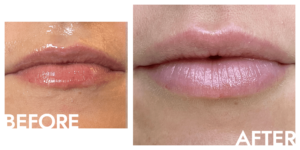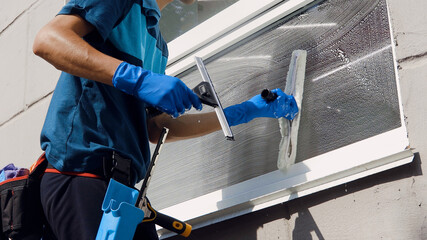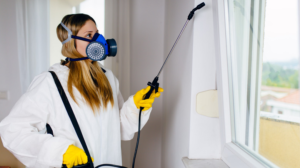Most fillers contain lidocaine, a pain-numbing substance that will help reduce discomfort throughout the treatment. A topical numbing cream is also usually applied before treatment.
Unlike implants, lip fillers can be staged over multiple appointments to change volume and achieve your desired result gradually. They are also reversible, making them perfect for trying out a new look. Contact LIP FILLER SAN DIEGO now!

Lip filler techniques constantly evolve to reflect the latest aesthetic trends and deliver a more natural-looking result. It is important for aesthetic practitioners to stay up-to-date with these advances to ensure patient safety and satisfaction. Advanced lip enhancement training programs, such as those offered by Acquisition Aesthetics, include one-to-one mentoring sessions, hands-on workshops, and live demonstrations. This allows practitioners to refine their skills, learn new procedures, and adapt to a dynamic field of aesthetic medicine.
The best injectors will consider your facial structure and lips’ unique anatomy when choosing an injection technique. Using this approach, they can achieve a balance and symmetry that is both flattering and natural-looking. This will prevent a “duck lip” appearance and other obvious signs of filler treatment.
Different lip filler techniques have specific cosmetic goals, such as enhancing the cupid’s bow shape or achieving a proportional lip shape. Some techniques are more superficial, while others are deeper and require a skilled hand to avoid vascular complications. The most common superficial lip filler injection patterns are fanning, cross-hatching and ferning. These patterns involve injections in a crisscross or fanning pattern that enhances lip definition and gives the lips a more sculpted look. Other injection patterns are more deep and involve the submucosa layer of the lips. Injecting at this level requires a high degree of skill because too much hyaluronic acid can cause an unnatural, lumpy appearance.
Another popular technique is the pillowy lip shape. This technique emphasizes the cupid’s bow and adds volume to the upper and lower lips for a fuller, more cushiony appearance. This is an excellent choice for patients with thin or aged lips, and it can also help improve a gummy smile.
The newest filler products are designed for longevity and durability, which means that they will last longer than traditional lip fillers. These new formulations are also more flexible and provide a softer texture than other fillers, which helps them blend better with the skin. Injection methods are also becoming more personalised, with an emphasis on tailoring treatments to individual patients’ needs. This reflects a trend towards a more holistic approach to aesthetic medicine, where facial plastic surgeons and other highly trained injectors consider a patient’s anatomy and unique aesthetic goals when choosing an injection technique.
Microdroplet technique
The microdroplet technique is an injection method that utilizes blunt-tip cannulas to minimize the risk of vascular injury. This technique is ideal for lip filler injections because it allows the injector to place the filler at a precise depth without causing vascular damage. The result is a more natural-looking appearance to the lips. The technique also helps reduce the risk of bruising or swelling.
In addition to its safety, the microdroplet technique is less invasive than traditional needle injections. The procedure can be completed within fifteen minutes, and a topical anesthetic cream is used to ensure patient comfort. The microdroplet technique also eliminates the need for multiple injection sites, which is a common side effect of other filler treatments.
It is important to note that while hyaluronic acid fillers can be extremely safe, all cosmetic treatments have risks. These can include bleeding, skin discoloration and rare allergic reactions. Although these side effects are usually not severe, they should be discussed with the patient prior to the treatment. The occurrence of these reactions is usually a function of the injection technique and the type of filler used.
Dr. Jaliman uses the microdroplet technique to create beautiful, full lips that look slightly plumper but completely natural-looking. She is a meticulous injector with years of experience and an aesthetic sense that enables her to enhance each patient’s individual beauty.
She is able to inject the philtrum, define the cupid bow and enhance the lips’ lateral part. She can even reshape the lips to achieve a more youthful and symmetrical appearance.
In addition, the microdroplet technique is an effective tool for correcting crow’s feet and other facial rhytides. A recent study of six patients showed that the addition of microdroplet injections to standard incobotulinumtoxin A significantly improved the effectiveness of this injectable for treating crow’s feet. The technique is an excellent complement to the lip augmentation techniques taught in this course.
Using this technique, the injections can be placed to buttress the lip borders, rejuvenate the philtrum and lip tubercles, and fill in the creases that cause lipstick bleed. However, it is crucial to use only medical-grade silicone and follow the proper injection techniques. Moreover, the injections must be performed by a physician with sufficient training in liquid silicone injections.
Restylane®
Restylane® is a dermal filler that can help reduce fine lines and wrinkles around the mouth. It also can add more volume to thin lips, a cosmetic concern that is common among many patients. There are several different types of Restylane products, with varying consistency and thickness. Some of the most commonly used fillers are Restylane-L, Restylane Silk and Restylane Kysse. All three of these products are FDA-approved for lip enhancements and contain lidocaine, a local anesthetic that provides numbness during injections.
One type of Restylane filler is called Restylane Refyne, which can soften and smooth expression lines such as nasolabial folds or laugh lines. It is made with XpresHAn technology and features a cross-linked hyaluronic acid gel that allows the skin to move naturally and create facial expressions. It also has a flexible structure that helps to keep the lip shape stable and natural-looking. Results typically last for about a year.
Another product in the Restylane family of fillers is Restylane Lyft, which can increase fullness to hollow areas of the face such as cheeks or temples. It also can reduce moderate to severe lines that form when smiling or frowning, such as nasolabial folds, which run from the nose to the corners of the mouth. Like Restylane Refyne, it uses XpresHAn technology and a cross-linked hyaluronic gel.
Other types of Restylane fillers include the lip enhancers Restylane Kysse and Restylane Silk, which both contain lidocaine to numb the lips during injection. They can add more volume to the lip area and can also correct perioral lines, which are the shallow lines above the upper lip that are sometimes referred to as smoker’s lines. These lines can make the lips look aged and tired and are best treated with a non-surgical cosmetic procedure such as lip filler injections.
A luscious pout is considered to be a sign of beauty. However, some people have a thinner or uneven lip shape that can detract from their appearance. Lip fillers can add more volume and can be injected at any age to achieve the desired shape. In addition, lip fillers can help reduce the appearance of vertical lines, also known as smoker’s lines.
Juvederm®
Hyaluronic acid fillers are a safe, natural alternative to lip lift surgery. The procedure is less invasive, and there’s minimal downtime. It also provides long-lasting results. However, it’s important to choose a licensed plastic surgeon or aesthetician to perform your treatment. Otherwise, you could end up with undesired results.
There are several types of hyaluronic acid fillers, but Juvederm products for lips are often the best option for lip enhancement and contouring. These products have a small amount of pain-reducing lidocaine, so they are more comfortable to get. The treatment can last 30-45 minutes. Before the injection, the medical provider will disinfect the lips and apply a topical numbing cream if necessary. Then they will make a series of injections to sculpt the lip shape. You may experience some swelling or bruising after the procedure, but these side effects usually resolve within two weeks.
Injectable fillers are ideal for people with genetically thin or asymmetrical lips, as well as those who have lost collagen over time. These fillers also provide a more youthful appearance by decreasing wrinkles, fine lines, and creases. They are made from a safe, biodegradable material and can be easily dissolved if they don’t work for you.
The best lip filler product for your needs will depend on your preferences, medical history, and lifestyle. Some people are more prone to allergic reactions than others, so it’s essential to talk to your doctor before you get lip fillers. It’s also a good idea to disclose any medications or supplements you’re taking.
Dermal fillers are a popular way to increase fullness and define the Cupid’s bow. They can also correct asymmetry and perioral lines around the mouth. Some hyaluronic acid fillers can even decrease vertical lip lines and creases, as well as nasolabial folds and cheeks for a pan-facial rejuvenation.
Many patients are concerned about the risks of lip filler injections, but a qualified plastic surgeon will minimize complications and provide safe, natural-looking results. The most common side effects of a lip filler are swelling, redness, and bruising, which usually go away on their own in about three days.



